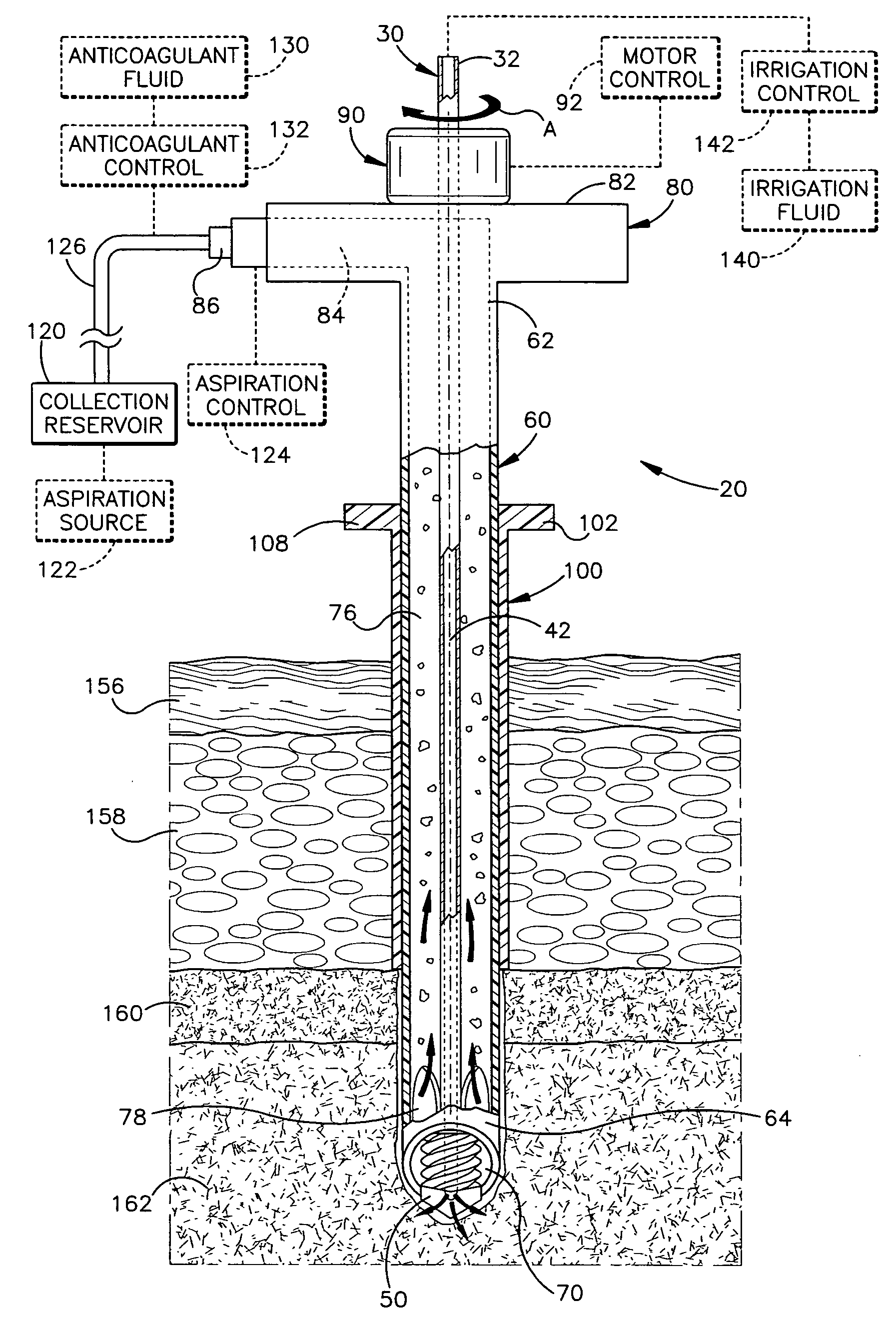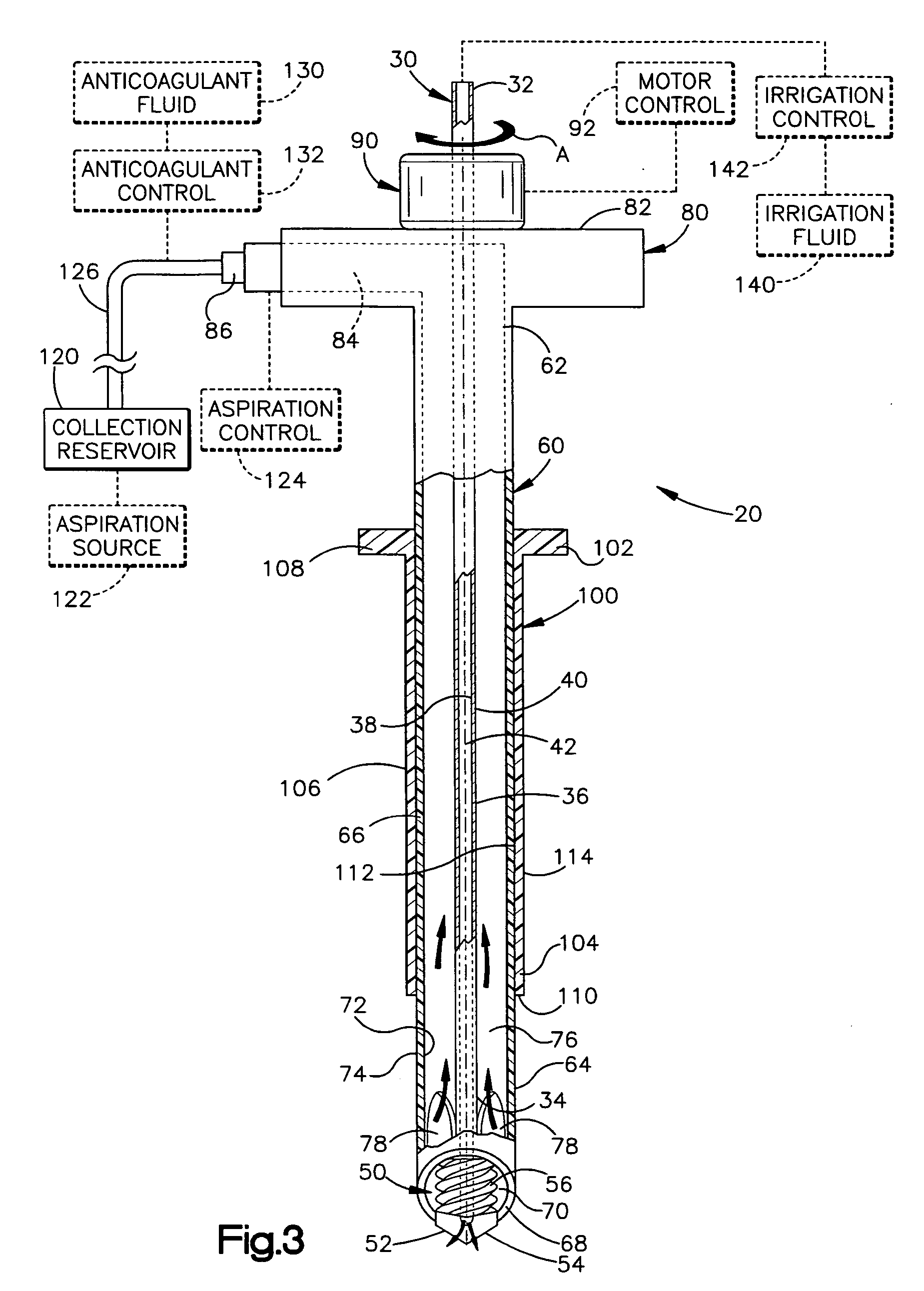Apparatus and method for harvesting bone marrow
a bone marrow and appendix technology, applied in the field of appendix and method for harvesting bone marrow, can solve the problems of prolonged surgical time and rehabilitation, blood loss, and significant morbidity of autogenous bone, and achieve the effect of promoting bone healing and minimal invasiveness
- Summary
- Abstract
- Description
- Claims
- Application Information
AI Technical Summary
Benefits of technology
Problems solved by technology
Method used
Image
Examples
first embodiment
[0046] The present invention relates to an apparatus and method for harvesting bone marrow and, in particular, is directed to a minimally invasive apparatus and method for harvesting bone marrow cells, blood, and bone fragments. As representative of the present invention, FIG. 1 illustrates a human pelvis 10 which includes the ilium 12, the ischium 14, the pubis 16, and the sacrum 18. FIG. 1 also illustrates an apparatus 20 for harvesting bone marrow cells, blood, and bone fragments in accordance with the present invention.
[0047] As best seen in FIG. 3, the apparatus 20 comprises a rotatable shaft 30, a cannula 60, and a sheath 100. The shaft 30 is a rigid tubular member with an outer diameter of 1-3 mm. The shaft 30 has a proximal end 32, a distal end 34, and a main body portion 36 extending between the two ends. The main body portion 36 includes cylindrical inner and outer surfaces 38 and 40, respectively. The inner surface 38 defines a lumen 42 that extends from the proximal end ...
second embodiment
[0072] the apparatus 300 includes a shaft 302 and a cutting bit 304 that are solid rather than hollow. The irrigation fluid source 140 and irrigation control 142 are fluidly connected, in a manner not shown, to a radially extending channel 306 in the housing 80 of the cannula 60. The channel 306 leads into the passage 76 in the cannula 60.
[0073] The apparatus 300 is used to harvest bone marrow cells, blood, and bone fragments in much the same fashion as the apparatus 20 described above, except that irrigation and aspiration are done via the same fluid passage 76. Accordingly, the irrigation process and the aspiration process must be oscillated so as not to coincide with one another. This oscillation can be accomplished manually by the surgeon or automatically by operatively coupling the aspiration control 124 to the irrigation control 142 as indicated by the dotted line 310 in FIG. 10.
[0074] As with the first embodiment of FIGS. 1-4, the embodiment of FIG. 10 provides an apparatus...
third embodiment
[0076] the cannula 60 of the apparatus 400 includes an annular lumen 410 in the side wall of the main body portion 66. Near the distal end 64 of the cannula 60, the lumen 410 terminates at a plurality of nozzles 412. The lumen 410 intersects an external port 414 near the proximal end 62 of the cannula 60. The anticoagulant fluid source 130 and associated control 132 are fluidly connected to the external port 414.
[0077] The apparatus of FIG. 11 is used to harvest bone marrow cells, blood, and bone fragments in much the same fashion as the apparatus 20 described above, except that the anticoagulant fluid can be introduced sooner into the harvested materials via the lumen 410 and the nozzles 412. The ability to introduce the anticoagulant fluid immediately after the harvested materials enter the passage 76 helps to preserve a high level of viability and to maintain the bone marrow cells harvested in suspension without formation of a fibrin clot.
[0078] As with the previous embodiments...
PUM
 Login to View More
Login to View More Abstract
Description
Claims
Application Information
 Login to View More
Login to View More - R&D
- Intellectual Property
- Life Sciences
- Materials
- Tech Scout
- Unparalleled Data Quality
- Higher Quality Content
- 60% Fewer Hallucinations
Browse by: Latest US Patents, China's latest patents, Technical Efficacy Thesaurus, Application Domain, Technology Topic, Popular Technical Reports.
© 2025 PatSnap. All rights reserved.Legal|Privacy policy|Modern Slavery Act Transparency Statement|Sitemap|About US| Contact US: help@patsnap.com



